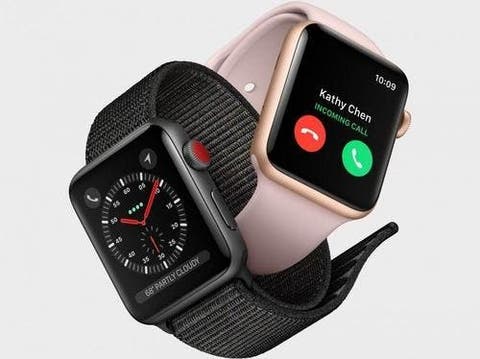Recently, IDC released sales data of the global smart wearable market in the first quarter of 2020. Global smart wearable device shipments were 72.6 million units, a year-on-year increase of 29.7%.
According to IDC data, in the first quarter of 2020, Apple’s shipped 21.2 million units, a year-on-year increase of 59.9%, with a market share of 29.3%. Xiaomi shipped 10.1 million units, a year-on-year increase of 56.4%, and the market share accounted for 14.0%. Samsung shipped 8.6 million units, a year-on-year increase of 71.7%, and the market share accounted for 11.9%. Huawei shipped 8.1 million units, a year-on-year increase of 62.2%, with a market share of 11.1%.
Also Read: The U.S. Army To Develop A Wearable Device That Detects Covid-19
Smartwatch Market
In the smartwatch segment, there were 16.9 million smartwatch shipments in the first quarter of 2020, a year-on-year decrease of 7.1%. Among them, Apple shipped 4.5 million units, down 2.2% year-on-year, ranking first with a market share of 26.8%. Huawei shipped 2.6 million units, up 118.5% year-on-year, and the market share accounted for 15.2%. Samsung shipped 1.8 million units, down 7.2% year-on-year, and the market share accounted for 10.8%. In addition, Huami Technology shipped 1 million units, up 80.2% year-on-year, and the market share accounted for 5.8%, ranking fifth.
Smartband Market
At the same time, the smartband market grew by 16.2%. This is mainly conditioned by the new product launches such as the Fitbit Charge 4 and aggressive price strategies from Xiaomi and Huawei. Meanwhile, hearables grew 68.3% and accounted for 54.9% of the entire wearable market.
What IDC Thinks About The Wearable Market
‘The hearables category was seemingly resilient to the market-suppressing forces caused by COVID-19,’ said Jitesh Ubrani, research manager for IDC Mobile Device Trackers. ‘Consumers were clamouring for these sophisticated earpieces not only for the abilty to playback audio but also to help them increase productivity, as many of them were forced to work from home and sought ways to reduce surrounding noise while staying connected to their smartphones and smart assistants.’
COVID-19 epidemic also affected the supply of smart and basic watches. Despite the decline, a few vendors, such as Huawei, Garmin, and Huami, could outcome this situation and managed healthy growth thanks to lesser reliance on markets in China and further expansion into the United States, Europe, and other parts of Asia.
‘The downward pressure on watches shifts the onus to the latter half of 2020,’ said Ramon T. Llamas, research director for IDC’s Wearables Team. ‘This gives companies the time to refine their products and messaging, and to align those with customer needs. Given the hyper focus on overall health and fitness in today’s climate, vendors would do well to highlight those capabilities, and provide guidance on how to live healthier lives.’
Follow Gizchina.com on Google News for news and updates in the technology sector.
